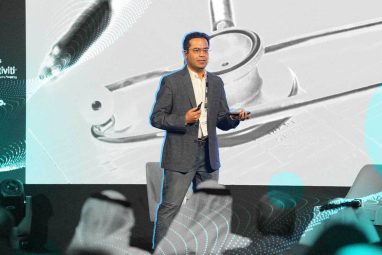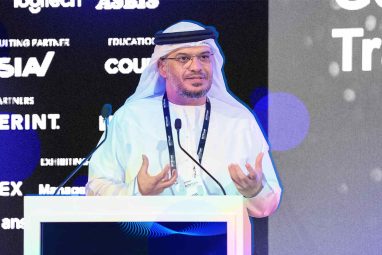What to Read Next
- UAE Bets on AI to Transform Smallholder Farming With New Research Institute
- Why OpenAI Is Abandoning Vesting Cliffs in the Race for AI Talent
- UAE’s AI Ambitions Collide With Infrastructure Limits, Kyndryl Report Warns
- India Accelerator Rolls Out $15 Mn Fund for Saudi Market Expansion
- OpenAI Raises the Bar for Enterprise AI with GPT-5.2
- OpenAI Flags ‘High’ Cyber Risk as State AGs Warn Industry Over Harmful Chatbot Outputs
Dr. Praphul Chandra presents targeted strategies to prepare the current workforce, university students, and schoolchildren for the AI-driven transformation ahead.
Today’s artificial intelligence systems are achieving benchmarks once considered out of reach for machines. Modern AI performs better than 99% of humans on standard IQ tests. It ranks higher than 97% of applicants in U.S. college admissions, scores over 90% on the U.S. Bar Exam required to practice law, and exceeds 80% on the U.S. Medical Licensing Exam. These are not projections for the future, they are current realities.
Speaking at GovTech Conclave 2025, Dr. Praphul Chandra, Professor and Director at the Atria Center for AI & Decentralized Technologies, Atria University, and Mentor at TekFrameworks, framed these numbers as a wake-up call.
AI is expected to displace 89 million jobs while creating 63 million new ones, he further noted. In his panel, Governing the Shift: How Policy Can Shape an AI-Ready Workforce, Dr. Chandra explained that the challenge lies in transitioning the workforce from shrinking roles to emerging opportunities. He outlined tailored strategies for three groups:
1. For the Current Workforce:
According to the World Economic Forum, 44% of skills will be disrupted by 2027. We recommend:
- Digital credentialing systems: Create interoperable, trusted platforms that verify upskilling and certifications across institutions and employers.
- Co-funded upskilling: Governments and industry should share the cost of upskilling, with models like Singapore’s SkillsFuture program offering tax incentives or wage subsidies.
- Hybrid evaluations: Use a mix of human and AI-based evaluations to fairly assess skills. For example, we moved to viva-style assessments to ensure students weren’t just submitting ChatGPT-generated work, while simultaneously using AI to auto-grade written exams and reduce faculty load.
2. For University Students:
NVIDIA’s CEO said: “English is the new programming language.” In a world where natural language is the new interface, we must:
- Ensure access to AI labs: Every student, regardless of major, should get hands-on experience with AI tools—not just CS students.
- Incorporate AI across disciplines: Whether you study law, medicine, design, or journalism, students must learn to integrate AI into their domain work.
- Update evaluation methods: We need assessments that test for problem-solving, critical thinking, and tool usage, not just memorization or regurgitation.
3. For School Students:
The next generation will grow up with AI, and we must prepare them early:
- AI literacy by grade 9: Students must understand the risks and powers of AI, akin to digital and media literacy.
- Hands-on learning with AI tools: Schools should introduce safe, age-appropriate tools that help children explore AI’s creative and analytical potential.
- Focus on human skills: In a world where AI can answer almost anything, schools must double down on creativity, ethics, emotional intelligence, and collaboration.
For a deeper dive into these themes, watch The New Logic of Work panel from GovTech Conclave 2025.
Our sponsors include Presenting Partner e& enterprise; Video Collaboration Partners Logitech and ASBIS; Consulting Partner Sia; Education Partner Coursera; Gold Partners TP and Verint; Silver Partners Liferay and Protiviti; and Exhibiting Partners Beinex, ManageEngine, Prezlab, Answered by Aramex, and Airia – Enterprise AI Simplified.









